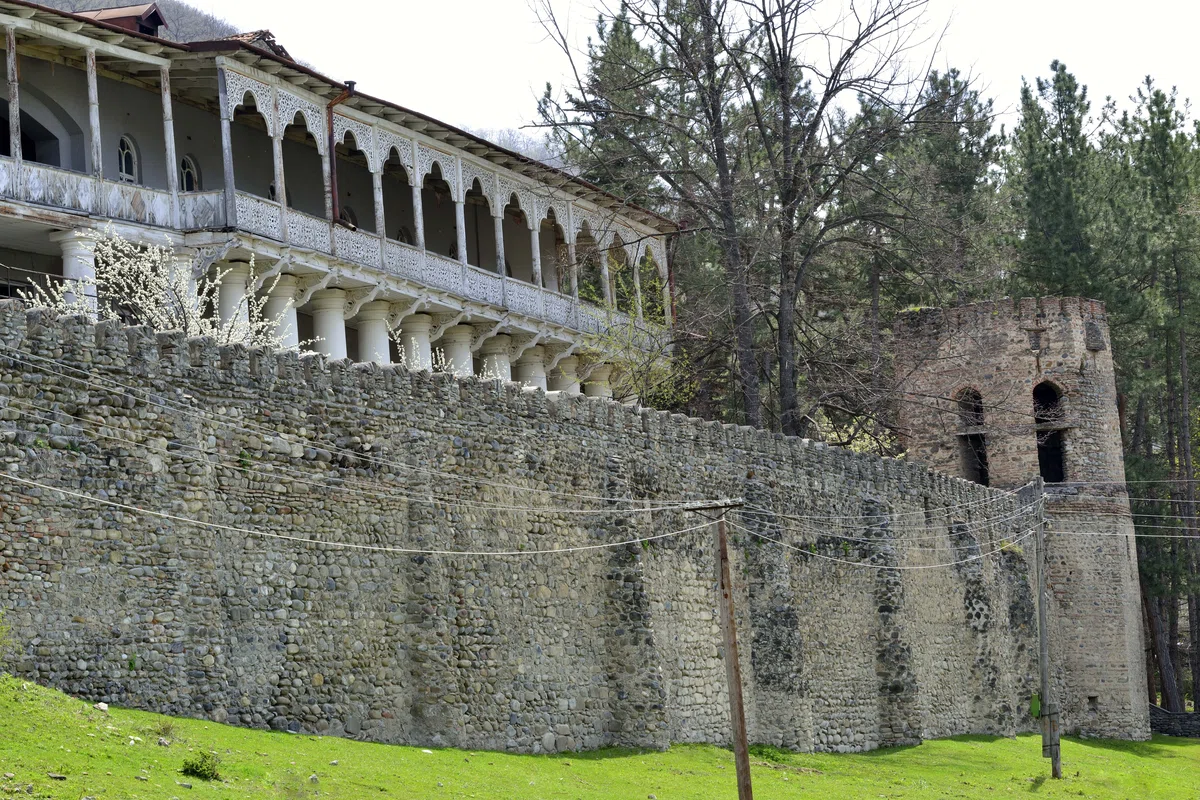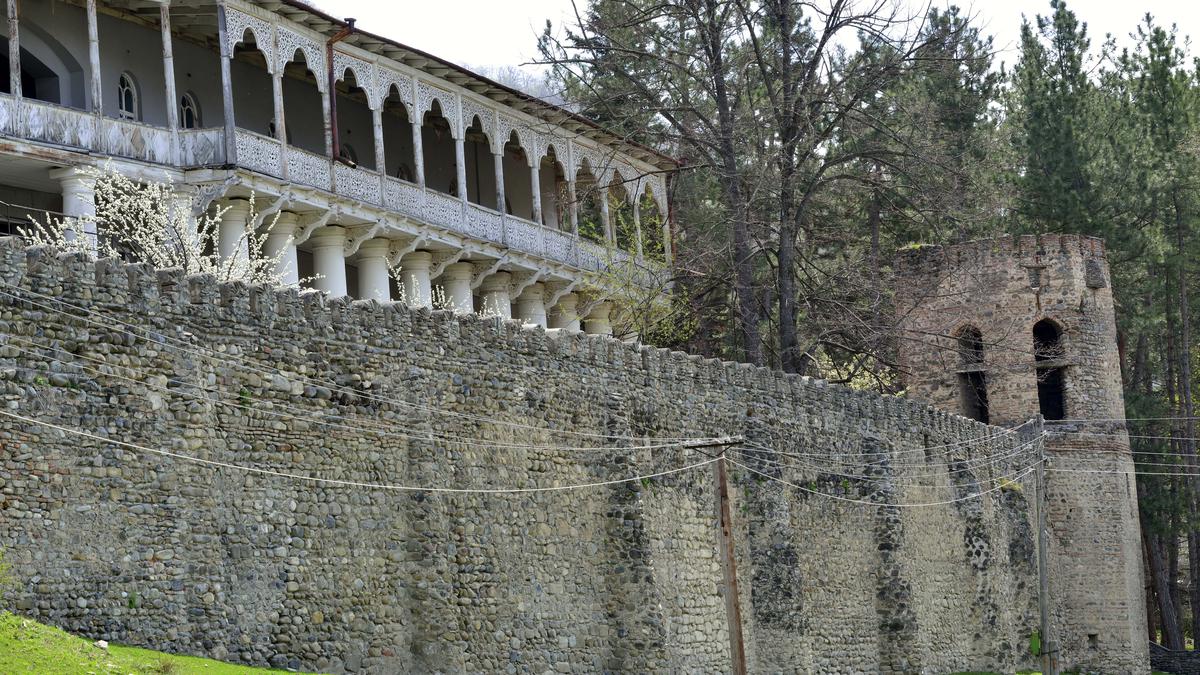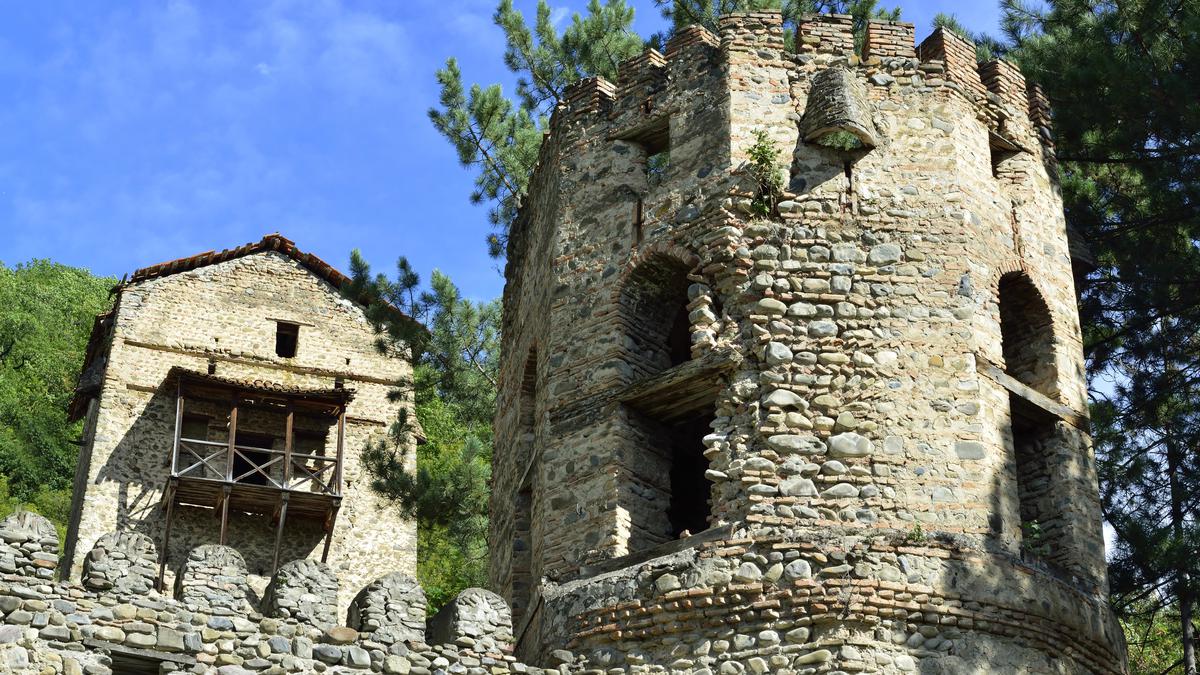
Interesting old Georgian houses. Beautiful places in Georgia. The fortress house of the Ksan Eristavs.
The fortress house of the Ksan Eristavs is a very interesting building, which is located on a mountain slope. Around the house is surrounded by a high strong fence, and the house itself is three-storied. The Eristav family lived only on the top floor of the building. Parquet floors, beautifully painted and decorated ceilings, interesting interiors – all this you will see in this beautiful building.
One of the first Georgian football players, the hero-junker Shalva Eristavi, who, along with other Georgian junkers, died in 1921 while defending the First Georgian Republic in an unequal battle at Kojor Fortress, when Georgian students put up stubborn resistance to the numerous Red Army.

The municipality of Akhalgori is located between the municipalities of Dusheti, Kaspi, Gori, Java and Kazbegi. Ero the mountainous landscapes are crossed by the Ksani River, which originates from Kelly Lake, located on the southern slope of the Magran-Dvaleti Kavkasioni. The river crosses the Mukhrani lowland and 84 kilometers from its source, near the village of Ksani, merges with the main river of Georgia – the Kura.
Akhalgori is located in the central part of the valley near the middle course of the Ksani River. In the first half of the XVII century, several architectural ensembles were built here, among which the fortress of the Ksan Eristavs stands out. The fortress has reached our time in the form that it received during the reconstruction in the XIX century.
The Fortress house of the Ksan Eristavs stands on the slope of the mountain. The terraced fortress is surrounded by a common fence with a height of 3 meters. The palace building itself consists of three floors. Eristavi's family lived on the third floor. The floor is covered with parquet, and the ceiling is painted and decorated with decorative elements. The first and second floors of the palace were intended for servants and the manager.
Beyondarchitectural ensemble — ruins of buildings for economic purposes and churches. At the end of the XVII century, a German scientist and traveler, a member of the St. Petersburg Academy of Sciences, Johann Guldenstedt traveled to Georgia. During this trip, he spent some time (at the beginning of 1772) staying with the owner of the palace, Prince David Eristavi-Ksansky. It was a period when the North Caucasian tribes were constantly raiding Georgia, so that he was forced to ask the prince to allocate dozens of fighters to protect him in order to ensure a safe journey. In his notes about Georgia, the traveler described not only the sights of the country, but also the severe consequences of the raids of the North Caucasian tribes.
Today, a museum of local lore is open in the fortress. There are more than 5,000 exhibits in several halls of the palace. A restaurant is decorated in the surviving stables a few meters from the central hall of the palace.
Tourists really like to walk around the Palace, especially everyone is impressed by the entrance to the museum – an old heavy door notifies workers about guests with a loud, lingering creak. This entourage immediately plunges into the Middle Ages, although the reconstruction of the XVII-XIX centuries greatly changed the appearance of the palace.
More exciting reviews about life in Georgia, its sights and interesting facts can be found in the Madloba catalog – the best guide for tourists!













35 comments
Log in to leave a comment